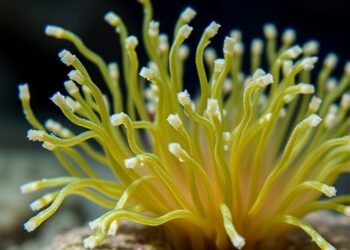Epiphora, which causes tears to overflow at the edge of the eyelid, is a common eye condition affecting more than 20% of infants. The condition can be caused by excessive tear production due to eye diseases or problems with the tear drainage system. While congenital nasolacrimal duct obstruction (CNLDO) in children often resolves on its own, some persistent cases require surgery. Managing this condition is challenging due to the small and varied anatomy of the tear ducts and involves procedures like probing, stent insertion, and dacryocystorhinostomy.
Epiphora, which causes tears to overflow at the edge of the eyelid, is a common eye condition affecting more than 20% of infants. The condition can be caused by excessive tear production due to eye diseases or problems with the tear drainage system. While congenital nasolacrimal duct obstruction (CNLDO) in children often resolves on its own, some persistent cases require surgery. Managing this condition is challenging due to the small and varied anatomy of the tear ducts and involves procedures like probing, stent insertion, and dacryocystorhinostomy.
A team or researchers at Ibn Al-Haitham Teaching Eye Hospital, Baghdad, Iraq has conducted aan observational study to evaluate how effective the mono-canalicular Lacrijet stent is in treating congenital nasolacrimal duct obstruction (CNLDO) in children over 24 months old. It looks at success rates in cases with or without previous probing. The team aims to add useful information to the existing research on the effectiveness of Lacrijet intubation for managing CNLDO.
A prospective observational study followed 25 children diagnosed with epiphora at an ophthalmology hospital. The procedure involved using mono-canalicular Lacrijet intubation. Patients were monitored for 180 days after surgery using both subjective and objective measures. Independent and paired t-tests were used for numerical data, and the chi-square test was applied to check the significant association of variables with outcomes. A p-value of 5% or less was considered significant.
According to the team’s analysis, Mono-canalicular Lacrijet stent insertion seems to be a straightforward, safe, and dependable outpatient procedure for treating CNLDO in children. Success rates were not significantly affected by age or previous failed probing. The researchers recommend that children with epiphora undergo early and thorough assessments, considering mono-canalicular stenting as an option. Future research could compare the outcomes of probing versus intubation as initial treatments for pediatric epiphora.
Read this article here; https://bit.ly/4ce5M9N
Start publishing research in Bentham Science journals here:
Journal
The Open Ophthalmology Journal
Article Title
Mono-canalicular Lacrimal Stent Intubation for Congenital Nasolacrimal Duct Obstruction Treatment
Article Publication Date
2-Apr-2024




